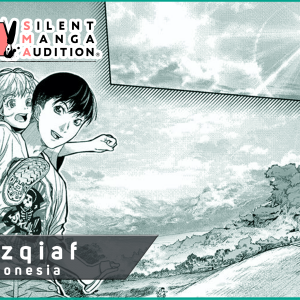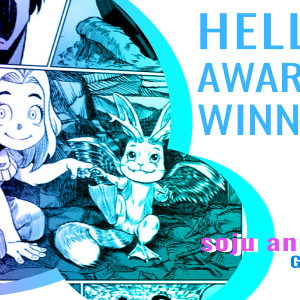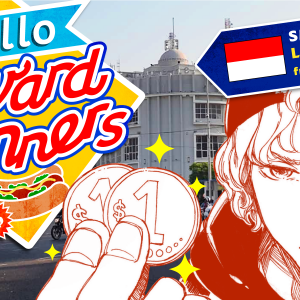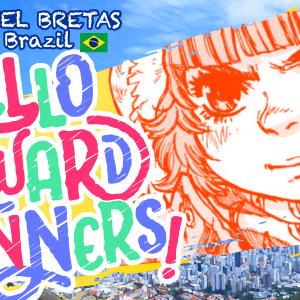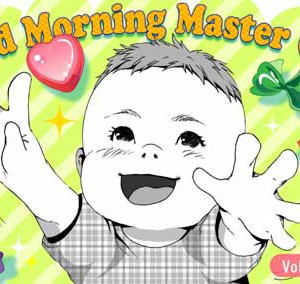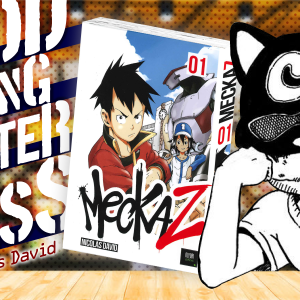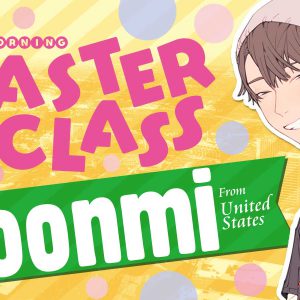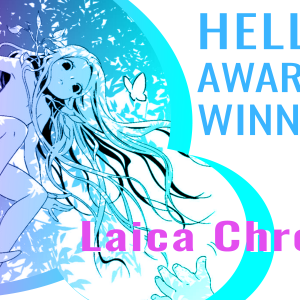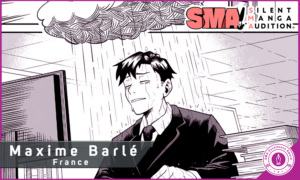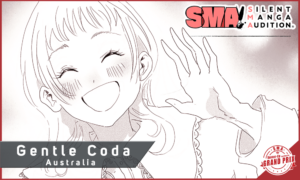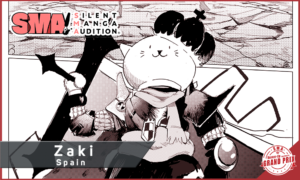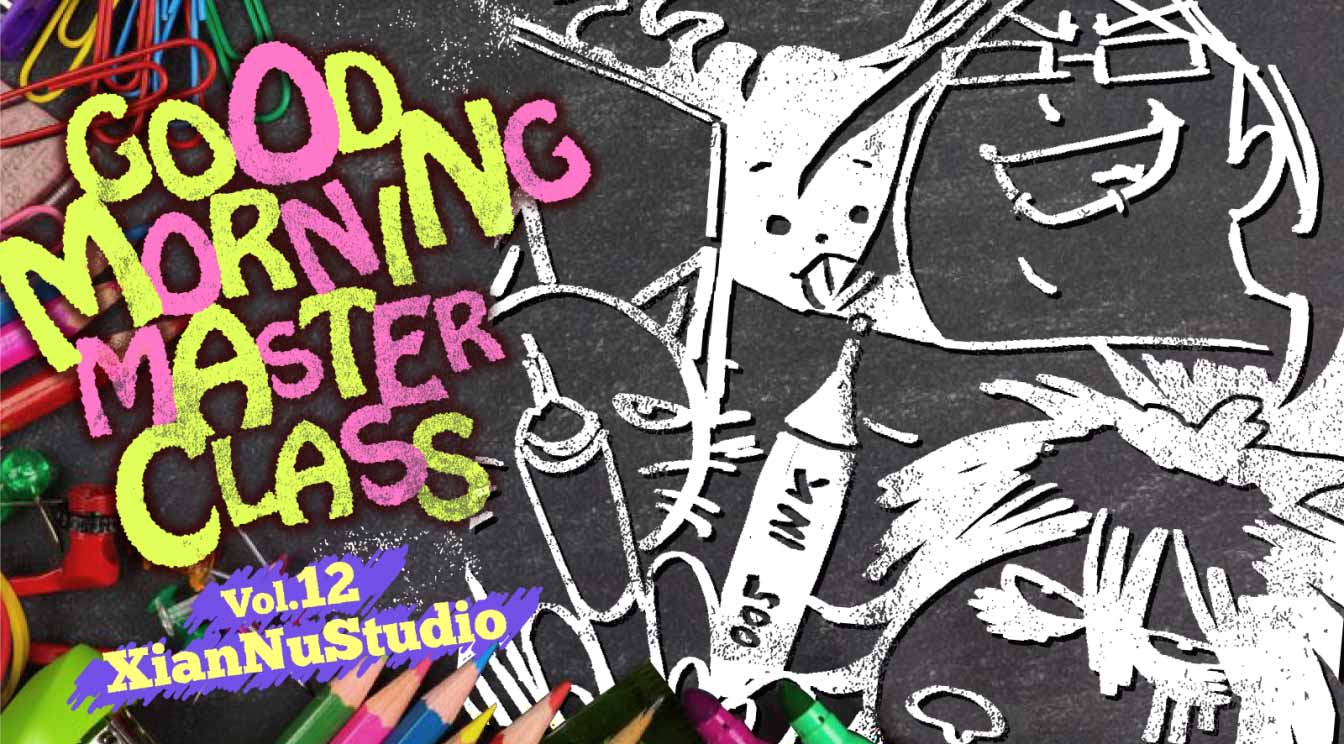
SMA MASTER CLASS, the future manga stars from SILENT MANGA AUDITION®.
In this series of interviews we’ll uncover the secrets to their manga creations!
This week’s MASTER CLASS members are old friends and now blood sisters of XianNu Studio.
Their time together have made them seasoned creators, to create next big comic hit in Spain.
They were kind enough to tell us how creating for Japan is much different.
Good Morning XianNu Studio!
INTERVIEW WITH XianNu Studio “This job has strengthened our friendship and contributed to our own personal growth.” 1. We heard you were at the Salón del Manga de Barcelona manga event recently. How was it? We worked very hard for a lot of hours. But people liked a lot our new manga, “ChanPrin,” so we are very glad. It’s not like Japan, of course, but we have good sales here XD 2. Tell us about your countries of origin and where you live? We were born in Spain, specifically in a small city on the south of the country called Granada. It is well known due to The Alhambra, a fortress built by the Nasrid dinasty when Granada was the reign’s capital. The city is not that big, but it is a really nice and cheap place to live in. Although it lacks on industry and working opportunities, the social life is great: when you order a drink, they give you a free “tapa” to eat, a Spanish snack; thus, you get a lot for little money and can enjoy a good time with your friends at the same time *laugh*.
3. How did you first meet? Why did you decide to work as a duo and have you had any fun adventures with each other?
We met when studying fine arts at high school. On the first year we were in different classrooms, but we spent the second one together. We had a small group of friends who enjoyed reading manga and role playing back then.
Laura:
A few years later, Irene asked me to work with her when she started drawing for the USA and France. I assumed the assistant’s duties for Irene.
We have embarked on lot of magic adventures thanks to role playing games. Not only are they our greatest source of relaxation, but they also sharpen our imagination to create our stories *laugh*. Like the game about faeries called “Changeling: The Dreaming.” It has a system thats fun, but it’s a little bit unstable and illogic.
However, our biggest adventure so far has been trying to earn our livings by drawing manga as a team. This job has strengthened our friendship and contributed to our own personal growth. It has not always been easy, but we keep on it. There might be times in which something unexpected comes up, and we have to deal with it with humor or ferociously depending on the occasion.
4. What are the advantages and difficulties of creating manga as a team?
The main difficulties are the small arguments we can experience when working together. After many work hours we can become tense: we might get the feeling that our teammate is not valuing our achievements, or we might get angry because she does not like or finds errors in what we have been working on. However, after overcoming these tense situations there are only advantages! The company, the less amount of work and the mutual joy of realizing that the teammate’s assistance has made your own tasks easier.
5. Tell us how you schedule your creations Laura! How long does it take for each step in the process? Which step is your favorite and least favorite?
When writing a plot, I start by summarizing all aspects: introduction, action development, the tense moments and the end. Once I have estimated how many pages will take for each scene, I can begin with the funniest and most creative process: putting everything into pages. My mind knows all the details, but it does not know how to accurately tell them in a story until I start sketching them. Even though I cannot draw good, it is easier for me if I outline all scenes in a simplified storyboard. I think on the dialogues while drawing the frames, and my mind pictures the next scene as I am working in a previous one.
Once I am done with this process, I write on the computer a description of all pages and frames. If I wait too many days after having finished the outlined storyboard, not even me can decipher the drawings! ^__^ Then I write all dialogues and, last but not least, forward the clean storyboard to Irene. She draws it again, adapting it to her style.
My least favorite step is when I am blocked up in a scene. It takes me a great amount of time to develop and improve it till I am satisfied, I do not like spending so much time on this. It would be nice if it could occur to me quickly, but that never happens! XD
“I outline all scenes in a simplified storyboard.”
6. What kind of tools do you use and which is your favorite Irene? Let us see it!
I use a blue mechanical pencil for the pencil drawings and SAKURA pigment liners when inking. My technique with markers are better than dib pens, but I need to use the dib for a game of “ChanPrin.” The dib pen and I have a difficult relationship *laugh*. It’s like my rival.
7. Tell us about your preferences when drawing manga and creating stories? What kind of advice do you have for creating characters and stories?
Irene:
I have been drawing everything digitally for a while due to our current project at work. However, I prefer traditional methods when making manga.
I create characters rather instinctively, so I cannot exactly give practical advice. I think the most important thing is for the author to actually like them. He will be working with them for a long time, so it is essential to care for and understand them completely, being it a hero or a villain.
Laura:
I like characters with their own opinion and psychology, those who can learn from their mistakes and sort them out. They should not be simply good or bad, pitch-black or pure white. In other words I like creating conflict within the characters to make sure the world isn’t divided between good and evil.
I personally enjoy when the reader can get what a character is thinking or feeling without him having to express it into words, but just a gaze tells them if he is angry, happy or suffering. I would recommend other authors to read many times the works of their favorite artists and to analyze their most beloved characters. That way they will be able to get why they like them so much and apply that when presenting their one characters to the readers producing the same effect.
“I think the most important thing is for the creator to actually like them.”
8. How do you practice drawing and where do you get your ideas from?
Irene:
Well, I have been working as a manga creator professionally for many years, so my way of practicing is the actual daily work. ☺ I never study about it, so I always learned from my mistakes and reading a lot of manga that I love.
Laura:
My actual inspiration are Irene’s requests. It could be a plot for a role playing game or a story for creating a manga, she tells me what she would like the most: “I want a love story full of obstacles,” “I want an epic adventure whose protagonist is a slave,” “I would like my character to have magic powers,” “I want my character to suffer, but he must get a happy end! Don’t kill my parents!” *laugh*. There are lot of requests to work on: they must be consistent and flow naturally, but surprise her at the same time. Even if she already knows the ends, the development must astonish her! I also read mangas like “Video Girl Ai,” “Tegami Bachi,” “Renka,” the first books of “D. Gray Man,” “Cat Street,” “Nisekoi,” and “Ranma 1/2”; books; and watch movies and tv shows like “Aguila Roja,” “Black Mirrors,” “The Walking Dead,” “The Fresh Prince of Bel-Air,” and “American Horror Story” for ideas I am turning into a full story at the moment.
This way of working is simple and inspiring at the same time. I already have a first reader to satisfy, and she is the most important one: the future manga artist.
9. Which manga or manga creator influenced your creative style? What impressed you about those works?
There have been many artists which drew our attention among the years, most of them from Japan. Right now we are being influenced by “Kanna Kii,” “Kazuka Takashima” and “Katsura Hoshino.” From Kanna Kii we love her amazing backgrounds, her organic lines, the expressivity of her characters and her moving stories. Kazusa Takashima draws very natural characters’ movements and positions, not to mention her excellent anatomy. To conclude, Hoshino’s page structures are quite dynamic and impressive.
10. What other skills or experiences help you create manga?
Irene:
Sport, dance and theatre are very helpful activities when creating correct scenes, positions and plots in manga. Authors are usually pretty skilled in these disciplines, so feeling them in our bodies is beneficial to our creative mind. For example, I was a ballet dancer so I don’t need references for it. I feel it in my body and I know how it’s works.
Laura:
Developing my own empathy. Even if I do not personally identify myself with my characters, I try to establish some affinity with them in order to be able to express and explain their feelings. Sometimes I read successful works, although I do not really like them, to analyze them and grasp the feelings they transmit to their readers. I ask the fans why they love them and, if possible, the author himself what he wanted to evoke. Such investigations help me develop my own stories much better.
11. What are the specifics areas you focus on when creating manga for SMA?
We like believable characters and being able to empathize with their emotions. Their feelings cannot always be expressed with words, but by drawing the appropriate gestures and atmospheres. The smallest detail should tell us something about their feelings and what is about to happen.
“Characters feelings cannot always be expressed with words, but by drawing the appropriate gestures and atmospheres.”
12. What kind of advice have you received from the SMAC! editorial team?
They have set us very different standards from the ones we had working for other countries. When presenting a project outside of Japan, the editors ask for a finished storyline, everything must be tied up from the beginning till the end. Then they check it, ask for some changes to be implemented by the author and give their final approval before you can start drawing. In SMAC! we follow an entirely new premise for us: “Do not think things too much, just let the plot flow!” We are learning to improvise and a new way of creating stories. They recommend us drawing from inspiration rather than studying every aspect thoroughly. It is quite difficult for us, but little by little we are learning to create that way.
13. Where there any moments you felt, “I’m glad to have entered this contest!”?
Yes, there were some moments.
The first one was when we appeared on the list of selected works for the final round. Even though we did not know if we could actually obtain an award, it was truly satisfying! The previous year had lacked on job offers, we had the feeling that our many years of experience were not being valued. The recognition of a professional Japanese jury enhanced our self-esteem. The readers also loved our story very emotionally. We gained our energies back and I also learned to be more positive and trust in my abilities.
The second moment was when SMAC! invited us to Japan. We had never been able to do such a journey due to lack of time and money, and thanks to SMAC! we enjoyed it a lot. If that was not joy enough, they also offered us to publish a series with them. We had always thought it would be impossible, even though we have drawn manga for several markets! The editors encouraged us to give it a try and launch a manga in the country of origin of our most beloved comics. Even if we are not successful, just having the chance is a dream come true!
14. Are you planning any future projects? What genre would you like to attempt in the future?
Currently we are working on a new comic for Spain called “ChanPrin”. It is a fantasy shoujo manga full of laughs and adventures. Its main feature is you can chose 4 different endings: 3 boys and 1 girl. It’s very similar to an Otome Game or a choose your own adventure book. The reader has to decide on an answer or a “route“ in certain situations, and each option leads her to a different set of pages along the volumes. After adding all answers from an specific route, there will be a final volume for each one where the reader will be able to read the love story of the female character with the chosen partner. It will we published on USA soon.
We would love drawing our own slice of life in a boys love or yaoi manga, but we still have not had the chance to work on this genre.
XianNu Studio
From Spain
Thank you for your time XianNu senpai’s! We hope to see “ChanPrin” in Japan, “slice-of-life” from different cultures is always an amazing slices of excitement! How many more fun-loving manga creators will come out of Spanish speaking countries? We think there must be dozens. Old friends make the best partners. So call them up and enter SILENT MANGA AUDITION® Round Seven today!
INTERVIEW WITH XianNu Studio “This job has strengthened our friendship and contributed to our own personal growth.” 1. We heard you were at the Salón del Manga de Barcelona manga event recently. How was it? We worked very hard for a lot of hours. But people liked a lot our new manga, “ChanPrin,” so we are very glad. It’s not like Japan, of course, but we have good sales here XD 2. Tell us about your countries of origin and where you live? We were born in Spain, specifically in a small city on the south of the country called Granada. It is well known due to The Alhambra, a fortress built by the Nasrid dinasty when Granada was the reign’s capital. The city is not that big, but it is a really nice and cheap place to live in. Although it lacks on industry and working opportunities, the social life is great: when you order a drink, they give you a free “tapa” to eat, a Spanish snack; thus, you get a lot for little money and can enjoy a good time with your friends at the same time *laugh*.
Thank you for your time XianNu senpai’s! We hope to see “ChanPrin” in Japan, “slice-of-life” from different cultures is always an amazing slices of excitement! How many more fun-loving manga creators will come out of Spanish speaking countries? We think there must be dozens. Old friends make the best partners. So call them up and enter SILENT MANGA AUDITION® Round Seven today!























